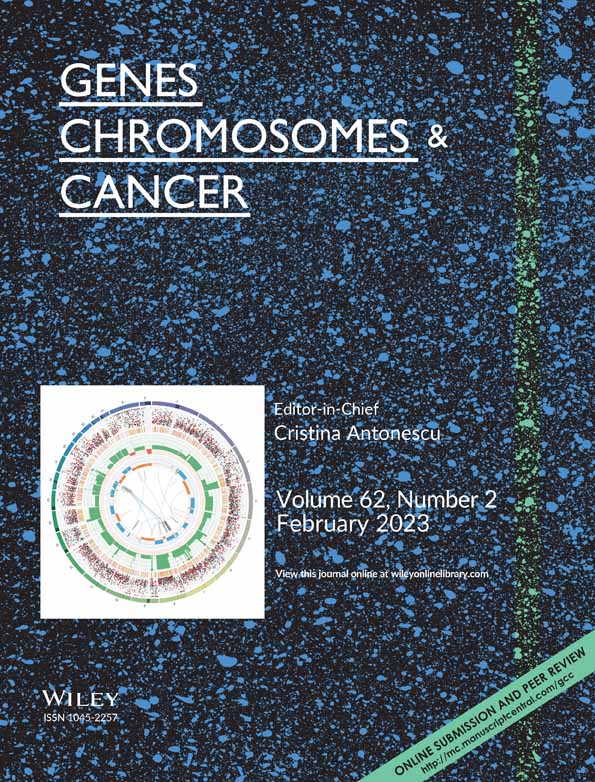Expanding the spectrum of GLI1-altered mesenchymal tumors—A high-grade uterine sarcoma harboring a novel PAMR1::GLI1 fusion and literature review of GLI1-altered mesenchymal neoplasms of the gynecologic tract
Abstract
GLI1-altered mesenchymal tumors comprise a group of seemingly unrelated entities, including pericytoma with t(7;12) translocation, plexiform fibromyxoma, gastroblastoma, malignant epithelioid neoplasm with GLI1 rearrangements, and GLI1-amplified mesenchymal neoplasms. Herein, we report a high-grade uterine sarcoma harboring a novel PAMR1::GLI1 fusion and present a literature review of GLI1-altered mesenchymal neoplasms of the gynecologic tract. A 57-year-old female presented with an abdomino-pelvic mass, felt since a decade prior. Magnetic resonance imaging showed a heterogenous myometrial mass extending beyond the serosa. The patient underwent oncologic surgical resection. Gross examination revealed a perforated multi-nodular uterine tumor (21 cm) with a firm white and soft fleshy cut surface, featuring hemorrhage and necrosis. The tumor was morphologically heterogenous, disclosing frankly sarcomatous areas composed of pleomorphic spindle and focally epithelioid cells, intermingled with a component of low-grade spindle cells arranged in fascicles. There was a rich vascular network and zones of necrosis with peripheral amianthoid-like collagen plaques. Lymphovascular invasion and metastasis to lymph nodes and omentum were present. The tumor was immunopositive for CD10 and cyclinD1, and negative for cytokeratins, myogenic, melanotic, and hormonal markers. ArcherTM Fusion Sarcoma Assay detected PAMR1(exon1)::GLI1(exon4) fusion, confirmed on RT-PCR and Sanger sequencing. The patient received chemo-radiotherapy, however, developed metastatic recurrence and demised 18 months post-surgery. Altogether, this is a rare and diagnostically challenging case of a uterine sarcoma harboring a novel GLI1 fusion. Emerging GLI/Hedgehog inhibitors provide clinical relevance to recognizing these tumors in modern pathology.
CONFLICT OF INTEREST
The authors declare that they have no known competing financial interests or personal relationships that could have appeared to influence the work reported in this article.
Open Research
DATA AVAILABILITY STATEMENT
The data that support the findings of this study are available from the corresponding author upon reasonable request.




